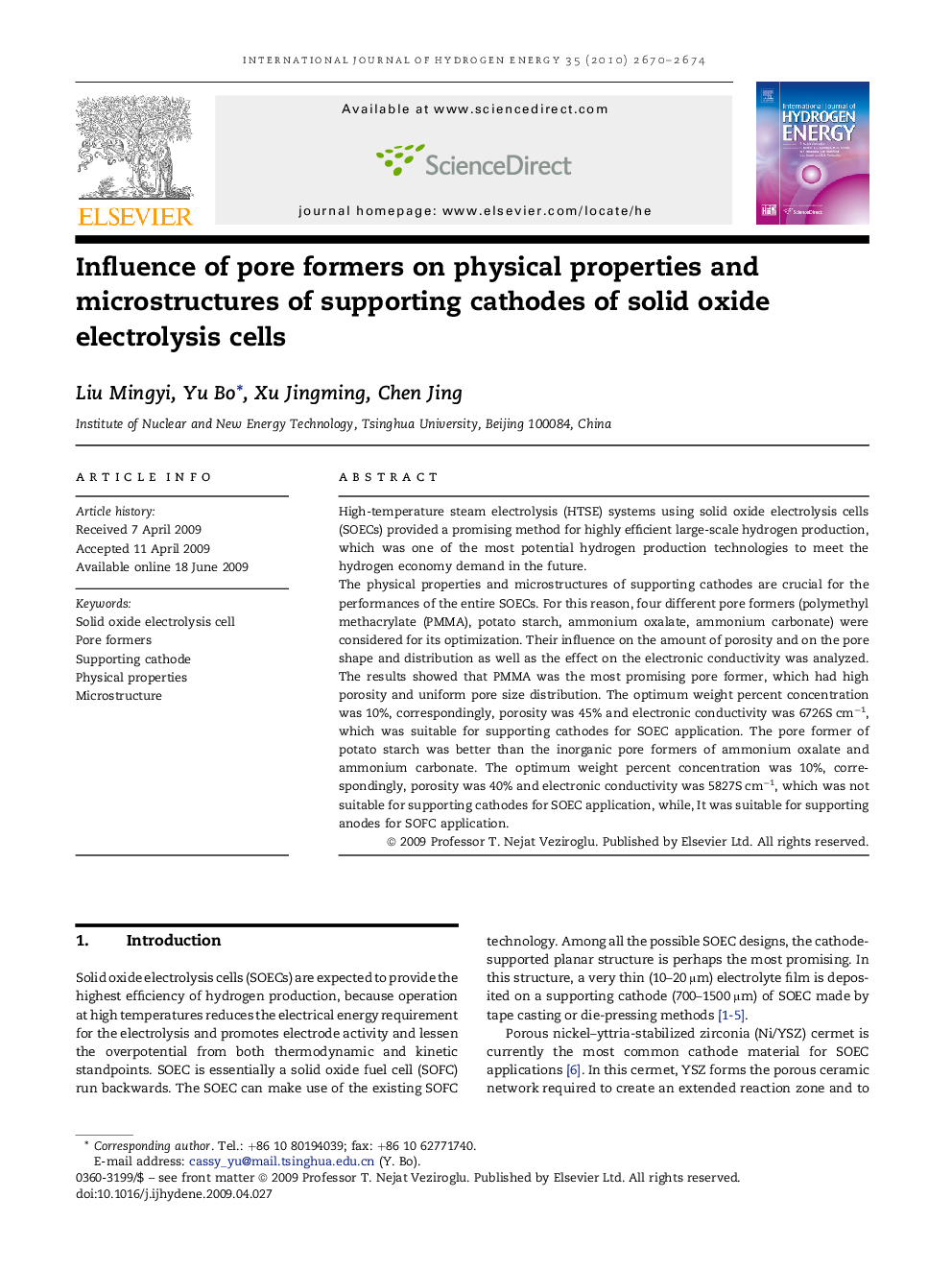| Article ID | Journal | Published Year | Pages | File Type |
|---|---|---|---|---|
| 1273234 | International Journal of Hydrogen Energy | 2010 | 5 Pages |
High-temperature steam electrolysis (HTSE) systems using solid oxide electrolysis cells (SOECs) provided a promising method for highly efficient large-scale hydrogen production, which was one of the most potential hydrogen production technologies to meet the hydrogen economy demand in the future.The physical properties and microstructures of supporting cathodes are crucial for the performances of the entire SOECs. For this reason, four different pore formers (polymethyl methacrylate (PMMA), potato starch, ammonium oxalate, ammonium carbonate) were considered for its optimization. Their influence on the amount of porosity and on the pore shape and distribution as well as the effect on the electronic conductivity was analyzed. The results showed that PMMA was the most promising pore former, which had high porosity and uniform pore size distribution. The optimum weight percent concentration was 10%, correspondingly, porosity was 45% and electronic conductivity was 6726S cm−1, which was suitable for supporting cathodes for SOEC application. The pore former of potato starch was better than the inorganic pore formers of ammonium oxalate and ammonium carbonate. The optimum weight percent concentration was 10%, correspondingly, porosity was 40% and electronic conductivity was 5827S cm−1, which was not suitable for supporting cathodes for SOEC application, while, It was suitable for supporting anodes for SOFC application.
